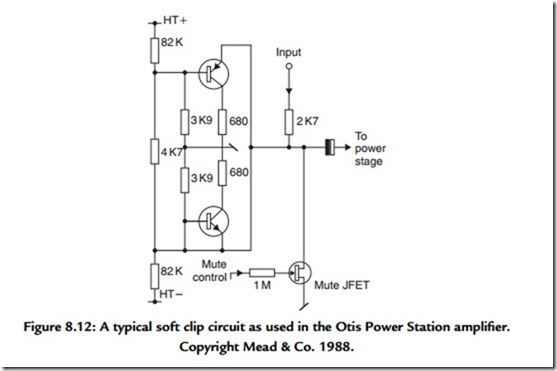Computer Control
Computer control of audio power amplifiers has been slow to develop. This is because amplifiers have not been a useful place, in most instances, for physical control surfaces.
With a virtual control surface, the traditional limitation vanishes. In turn, installation setup, constant awareness of status, and troubleshooting of amplifiers in medium to large installations are all enhanced. One person can “be in six places at once.”
The Dutch PA system manufacturer Stage Accompany was a pioneer of the computer- controlled and monitored PA system in the mid-1980s. However, the first widespread commercial system that wasn’t a dedicated, integrated type was Crown’s IQ, running on Apple Macintosh (1986). The second was Crest Audio’s aptly named Nexsys, running on PC. Most subsequent systems have been IBM-PC-compatible types, running under Microsoft’s Windows. Every system is different, yet offers similar, fairly predictable features; there is no clear-cut choice. At the time of writing (1996), some “future proofed” universal, nonpartisan, networkable system contenders that seem most likely to become industry standards appear to have priced themselves out of consideration. Instead, makers continue rolling their own. Recent examples include the IA (intelligent Amplifier) system by C-Audio, the MIDl-based interface used by MC 2 (UK), and QSC’s
Dataport system.
Today’s computer-control systems theoretically offer:
1. the remote control of many of most of the facilities and controls considered here and in other chapters.
2. the flexible ganging, nesting, and prioritization of these controls.
3. the transmission of real-time signal, thermal, rail voltage, or PSU energy storage data, monitoring, logging, and alarming. May even include a measure of utilization, for example, if a particular amplifier’s swing is largely unused as a consequence of overspecification.
4. the remote, even automatic, testing of amplifiers, speaker loads, and their connections.
Thus far, most computer-controlled power amplifiers require an interfacing card to be plugged in. Some types have integral microprocessors.
A well-designed computer control interface must not affect the analogue systems grounding or compromise mains safety. These requirements are met by the fiber-optic, opto-, or transformer-coupled interfacing, familiar enough in digital audio. Such systems must also not only meet EMC requirements, but also, in real world conditions, not radiate or introduce EMI to the power amplifiers. The system must also be able to recognize faults in its own connectivity to power amplifiers.
